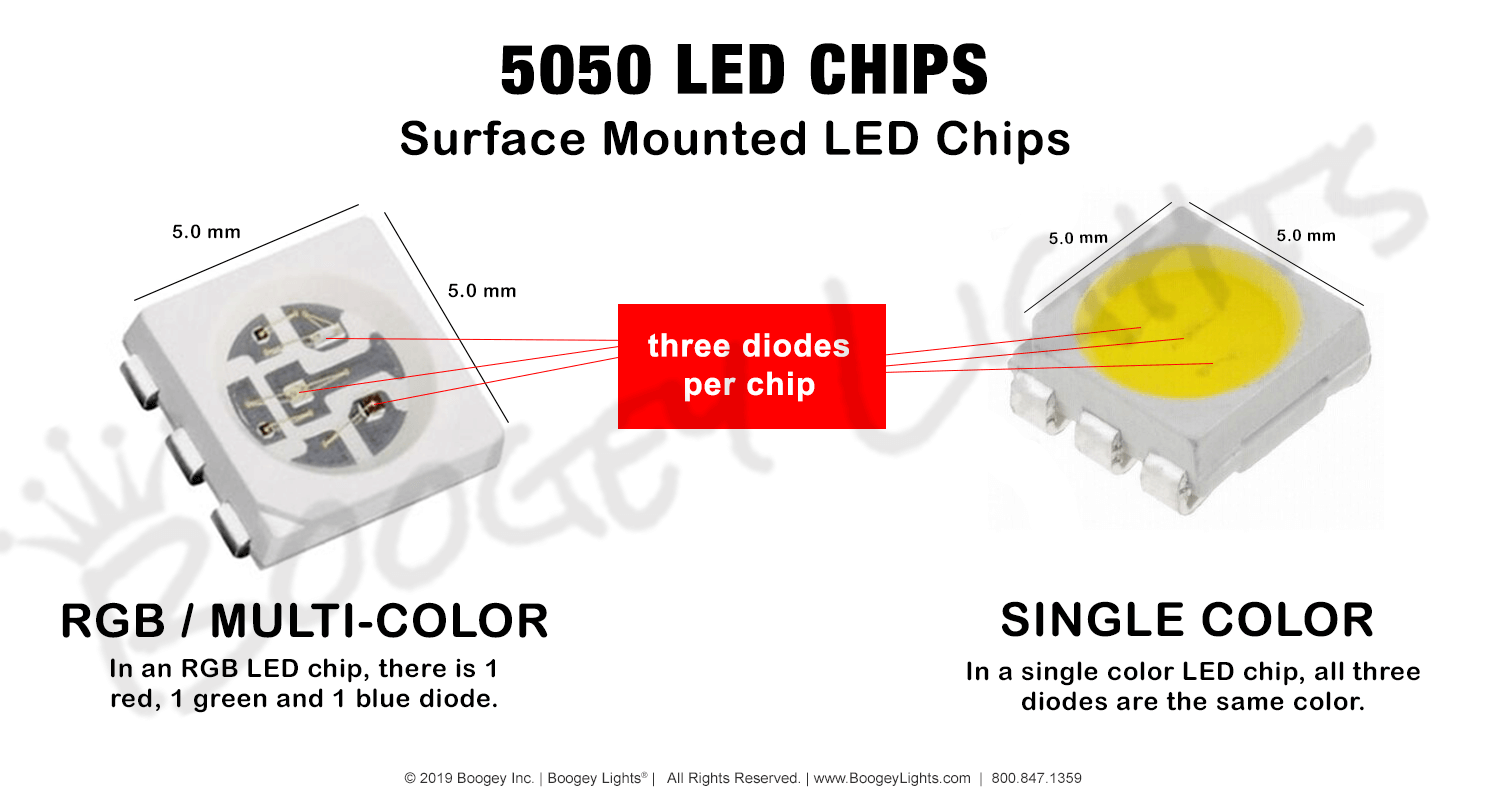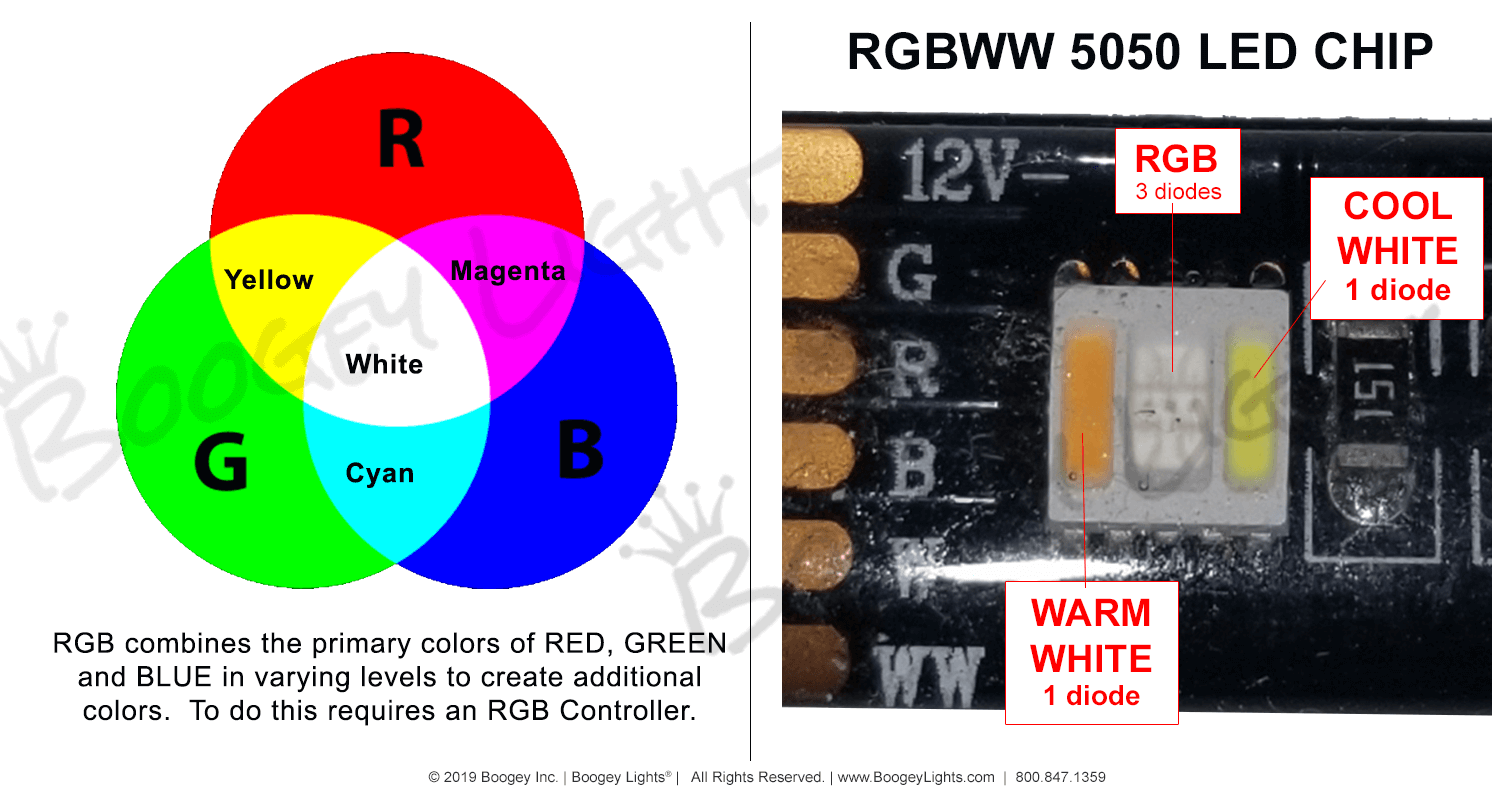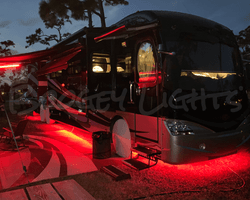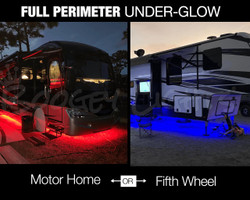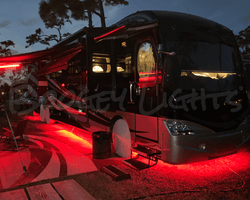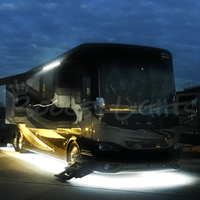Answer
Sep 23, 2021 - 04:09 PM
There are three basic LED types we use in manufacturing Boogey Lights LED lighting solutions. And, we exclusively use 5050 LED chips -- the brightest LEDs made. 5050 LED chips are named after the dimensions of each chip: 5.0mm x 5.0mm. The most common 5050 LED chips contain 3 diodes although some can have as many as 5 diodes. Lumens ratings for 5050 LEDs are typically in the 15-22 range depending upon the configuration.
SINGLE COLOR 5050 LED CHIPS
A single-color 5050 LED includes 3 diodes of the same color which makes it incredibly bright for that one color. While white single color 5050 LEDs can be produced in any Kelvin temperature range, they're most commonly made in the cool white or pure white spectrum since white light in this spectrum is best where bright illumination is needed. Single-color 5050 LEDs can be connected directly to a 12vdc power source without a controller although a controller may be used to provided additional functionality such as on/off, dimming and other pre-set functions.
RGB 5050 LED CHIPS
A multi-colored RGB 5050 LED chip includes 1 red, 1 blue, and 1 green diode (thus where the term 'RGB' comes from). It's the mixing of these three different color diodes that produce up to 16 million different color combinations. Multi-color RGB 5050 LEDs require the use of an RGB controller. This controller mixes the red, green and blue colors to create other colors. For example, to create the color yellow, the controller mixes equal parts of red and green (blue is off). To produce the color white using an RGB 5050 LED, the controller mixes equal parts of red, green and blue. The color temperature of white created by RGB 5050 LEDs is in the cool white or pure white spectrum with Kelvin temperatures typically in the 5500K-6500K range.
RGBWW 5050 LED CHIPS
(RGBWW = RGB + Warm White + Cool White)
There is a third type of 5050 LED chip and that is the RGBWW 5050 LED. RGBWW 5050 LEDs combine the best of single color and multi-color RGB LEDs into one 5050 LED chip. An RGBWW LED chip contain 5 diodes: 1 red, 1 green, 1 blue, 1 warm white, 1 cool white. Because of the two extra diodes, the PCB for RGBWW LEDs is wider (12mm) than RGB LEDs (10mm). RGBWW 5050 LEDs also require the use of an RGBWW controller to create and mix different colors. The great thing about an RGBWW LED chip is that not only will it produce all of the same colors as an RGB LED chip, it will also produce the color white on both ends of the Kelvin spectrum. With RGBWW, you can for example create a WARM WHITE (2000K - 3000K) and a COOL WHITE (4600K - 6500K). Better still, by mixing equal parts of the Warm White and Cool White, you can also create a Neutral or Natural White color. But it gets even better; by mixing the warm white and cool white diodes with the RGB diodes it's possible to create additional variations of RGB light combinations. For example, mixing equal parts of red, green and blue of the RGB LED and then adding the warm white diode and cool white diode produces an incredibly bright white light not possible with any other 5050 LED chip.
VISIBLE LIGHT SPECTRUM
What is the visible light spectrum? The visible light spectrum is the segment of the electromagnetic spectrum that the human eye can view. This range of wavelengths is called visible light. Typically, the human eye can detect wavelengths from 380 to 700 nanometers (nm). In this color chart we illustrate the range of colors the human eye can typically see starting with Violet (380 nm) up to Red (700 nm).
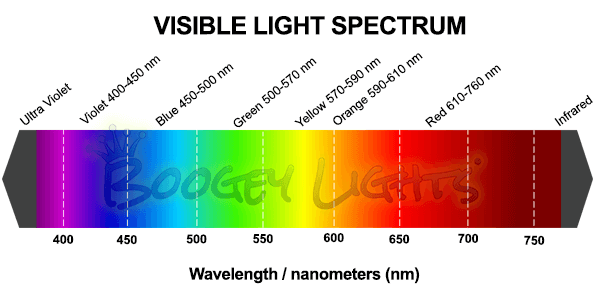
Different wavelengths of light are perceived by the human eye as different colors. For example, light with a wavelength of about 400 nm is seen as violet; light with a wavelength of about 700 nm is seen as red. However, it is not typical to see light of a single wavelength. Humans are able to perceive all colors because there are three sets of cones in our eyes: one set that is most sensitive to red light, another that is most sensitive to green light, and a third that is most sensitive to blue light (RGB). It is the mixing of these three primary colors (red, green, blue) that produce the other colors we see.
